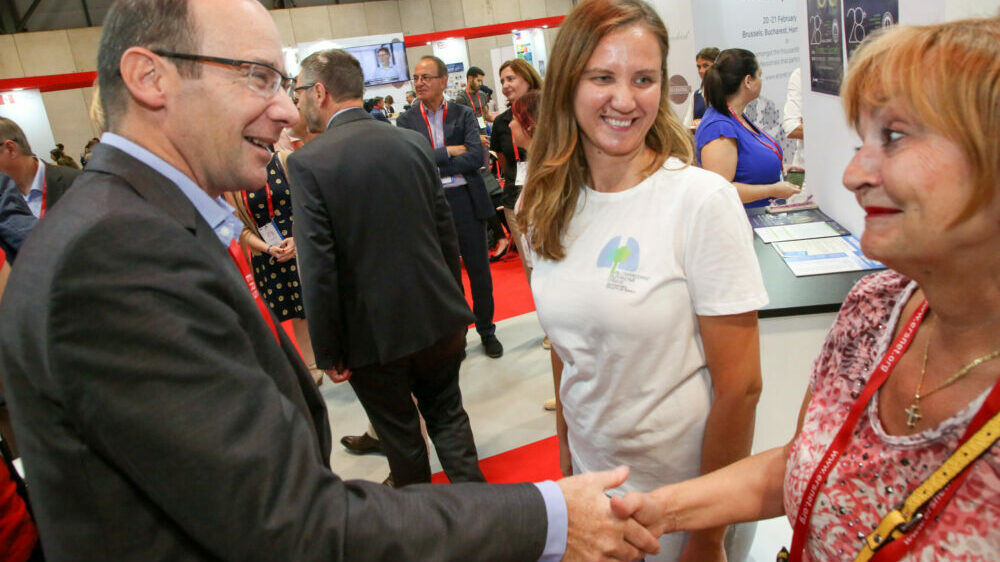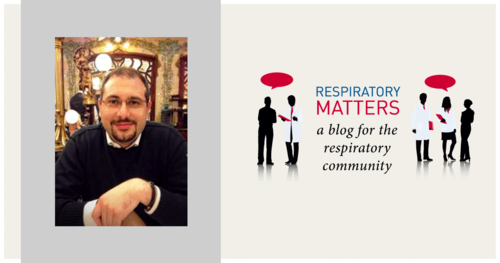More than other pulmonary pathologies, lung cancer requires a multidisciplinary approach to set up treatment which, with the same incidence, could influence the prevalence, or in other words a treatment that could improve survival and ensure a good quality of life. In the recent past, patients were discussed in occasional meetings where different specialists participated in the definition of the treatment strategy. More recently, multidisciplinary meetings have assumed the fundamental role of clinical discussion: not only is the treatment phase discussed, but also the diagnostic steps. Thus the multidisciplinary meeting becomes a continuous update about the patient. Also, to borrow the words of Katsuya Hosotani (one of the world’s leading experts on quality), “relying on experience is the best way to increase waste and inefficiencies”. By bringing together a range of expertise, the multidisciplinary meeting counteracts this tendency. As we shall see, it has numerous advantages, such as the guarantee of a correct therapeutic decision for the precise neoplasm of the patient. Moreover, every participant is better protected from errors caused by the opinion of the individual (“Eminence Based Medicine”).
Therefore the modern management of lung cancer should be multidisciplinary in order to facilitate precise staging and optimal treatment. All lung cancer patients, no matter where they are treated, should benefit from a diagnostic and therapeutic strategy defined by a multidisciplinary team composed of an oncologist, surgeon, respiratory physician, pathologist, radiotherapist and general practitioner. The therapeutic strategy decided by the multidisciplinary team must be derived from evidence-based guidelines and ongoing clinical protocol, tailored to information about the patient given during the typical clinical presentation of the case. Indeed, it is necessary to follow basic shared rules in order to trace the furrow in which to move or move away. These rules are the guidelines: international ones (taking into account different realities and mostly defining what it is not advisable to do) and national ones (contextualised to the reality in which they must operate, defining both what should not be done and what can be done). Furthermore, the national guidelines take into account the fact that each health facility is located within a wider region, thus defining a mosaic of hospital–regional collaborations that could cover the patient’s needs.
Multidisciplinary tumour boards and teams have been shown to improve outcomes in the treatment of cancers. By meeting and prospectively discussing each patient, a consensus on a treatment plan can be reached and implemented. The improved outcomes in treatment, especially in surgically resected patients, are the result of an inherent selection bias in the multidisciplinary group decision. This bias is based on better preclinical staging by appropriate imaging studies and improved patient risk stratification obtained using clinical practice guidelines. A reduction in perioperative morbidity and mortality and improved survival in cohorts using a multidisciplinary team approach have been found. Other published evidence has similarly reported outstanding morbidity and mortality results in resected patients. The authors credited clinical pathways and tumour board evaluation for improved patient selection leading to better outcomes.
Importantly, the multidisciplinary discussion is a moment of growth for the joining specialists. Through repeated discussion, the oncologist learns the surgical indications and the surgeon learns the radiotherapeutic approaches; in discussion with the radiologist, the surgeon can come to understand a radiological examination and the radiologist learns the images’ particularities for the surgeon. On these occasions, each specialist can bring to the team the updates from their discipline they have acquired during conventions and conferences, contributing to the multidisciplinary team’s collective growth. The fast and continuous development of medicine and the continuous development of technological innovations make it increasingly difficult for the individual physician to keep up-to-date and competent, something which has led to the development of Continuing Medical Education (CME) worldwide. Participation in CME programmes is not only a formal and ethical duty for doctors, but patients have a right to expect and require careful, up-to-date and empathic practitioners. This is even more significant today as patients become increasingly informed and educated about their disease and the possible answers of medicine to its diagnosis and treatment.
Patients treated in a multidisciplinary way cost less to the healthcare system and this favours the evolution from an old hospital-centred conception to a real and useful continuity between hospital and region, involving a closer collaboration between general practitioners and hospital specialists. In this spirit of collaboration, multidisciplinary teams contribute to the continuity of care, which today is often disregarded. Moreover, through the multidisciplinary teams, better communication and collaboration between the hospital and the region is carried out every day in several ways: keeping the general practitioner informed of the receipt of the patient's care, if not directly requested, through a multidisciplinary meeting report; the possibility of contacting the specialist who takes care of the patient during the whole diagnostic and therapeutic procedures; and the possibility of discussing the patient and, above all, agreeing and planning with the specialists the therapeutic strategies and the follow-up.
“Begin by doing what is necessary, then what is possible. Suddenly, you will be surprised to do the impossible…”
– Francis of Assisi
About the author
Dr Luca Bertolaccini is a senior consultant in the Department of Thoracic Surgery, AUSL Bologna – Maggiore Teaching Hospital, Bologna (IT). He is also Secretary of the ERS Assembly Group 8.1 Thoracic Surgery.
Dr Bertolaccini is a member of European Society of Thoracic Surgeons, European Respiratory Society, Royal Society of Statistics, International Society for Clinical Biostatistics, American Association for the Advancement of Science, American Physical Society, and Scandinavian Society for Research in Cardiothoracic Surgery.
His primary clinical interests focus on minimally invasive thoracic surgery, thoracic oncology and uniportal VATS.
Dr Bertolaccini is Assistant Editor of the European Journal of Cardio-Thoracic Surgery. He is Guest Editor of the Statistic Corner Column of the Journal of Thoracic Disease and also serves on several editorial boards, and he is a reviewer for many scientific journals.
His research interests and leading publications focus on minimally invasive thoracic surgery and advanced biostatistics models.
Suggested readings
- Katsuya Hosotani. Japanese quality concepts: an overview. Quality Resources, 1992. ISBN 052791651X.
- Andrew T. Turrisi, David H. Johnson, Harvey I. Pass, David P. Carbone, John D. Minna, Giorgio V. Scagliotti. Principles and Practice of Lung Cancer. The Official Reference Text of the International Association for the Study of Lung Cancer (IASLC). Lippincott Williams and Wilkins, 2010. ISBN 9780781773652
- Leo F, Venissac N, Poudenx M, Otto J, Mouroux J; Groupe d'Oncologie Thoracique Azuréen. Multidisciplinary management of lung cancer: how to test its efficacy? J Thorac Oncol. 2007;2:69-72.
- Goldberg SB, Willers H, Heist RS. Multidisciplinary management of small cell lung cancer. Surg Oncol Clin N Am. 2013;22:329-43.
- Tamburini N, Maniscalco P, Mazzara S, Maietti E, Santini A, Calia N, Stefanelli A, Frassoldati A, Santi I, Rinaldi R, Nigim F, Righi R, Pedrazzi S, Cavallesco G. Multidisciplinary management improves survival at 1 year after surgical treatment for non-small-cell lung cancer: a propensity score-matched study. Eur J Cardiothorac Surg. 2017 Dec 25. doi: 10.1093/ejcts/ezx464.
- Kidane B, Toyooka S, Yasufuku K. MDT lung cancer care: input from the Surgical Oncologist. Respirology. 2015;20:1023-33.
- Rivas-Perez H, Nana-Sinkam P. Integrating pulmonary rehabilitation into the multidisciplinary management of lung cancer: a review. Respir Med. 2015;109(4):437-42.





